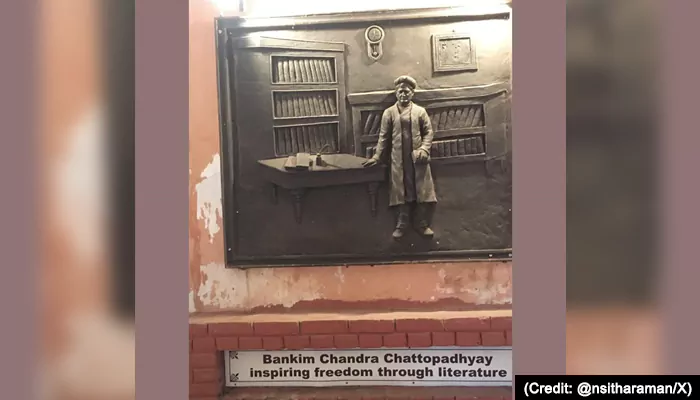
Here's a story about how locked-up freedom fighters turned hymns into weapons of hope and unity!
Imagine being locked in a cold, damp colonial prison cell. Your crime? Wanting freedom for your country. It’s dark, it’s isolating. What do you do? For many of India’s bravest freedom fighters, the answer was simple: sing. Not just any songs, but powerful bhajans – devotional hymns – that became secret codes, morale boosters, and roaring anthems for an entire nation fighting to break free. Pretty wild, right? Let’s dive into this incredible slice of history.
British jails in India were grim places. Designed to crush spirits, they housed revolutionaries, satyagrahis, and political thinkers. Communication was restricted, newspapers banned. But the British couldn’t control everything – especially the sound of prayer and devotion deeply woven into Indian life.
Bhajans were perfect. Rooted in faith and tradition, singing them wasn't inherently "seditious." They provided immense spiritual comfort in terrifying times. More importantly, their lyrics – often about righteousness, sacrifice, and triumph of good over evil – held double meanings for the imprisoned patriots. A hymn about Lord Rama's exile? That sounded an awful lot like India under the British! A song praising unwavering faith? That felt just like the resolve needed for the freedom struggle.

The watch tower of the infamous cellular jail in Port Blair, Andaman, where Indian political leaders were exiled to solitary confinement and tortured by the British.
Several bhajans sung behind bars transcended prison walls to ignite millions:
Lokmanya Tilak’s "Chatrapati Shivaji Raja Ki Jai"
Allegedly composed/modified in Mandalay Jail, 1908-1914.
While imprisoned in Burma, Tilak, the fiery nationalist, is widely believed to have drawn inspiration from Shivaji’s fight against the Mughals. Adapting traditional verses, this powerful chant celebrating Maratha valor became a direct call to resistance against the British Raj. Its rhythmic, energetic cry ("Hail to King Shivaji!") was electrifying, reminding people of past victories against foreign rule. It became a signature at Tilak's public meetings upon his release.
— The Tilak Archives (@tilakarchives) July 20, 2020
A Portrait of Lokmanya Tilak
(@tilakarchives/X)
Bankim Chandra Chattopadhyay’s "Vande Mataram"
Popularized widely, sung constantly in prisons
Though written earlier, this ode to the Motherland, from the novel Anandamath, became the anthem of the Swadeshi movement (early 1900s). Its opening Sanskrit verses ("Vande Mataram" - "I bow to thee, Mother") were pure, potent patriotism. Singing it in prison was an act of defiance. It stirred deep emotions, transforming the abstract concept of the nation into a beloved mother figure worth dying for. Its popularity soared precisely because it was sung so fervently by imprisoned heroes.
Bankim Chandra Chattopadhyay (1838–1894)
— Draconian Knight (@SplattRawDodo) June 26, 2025
The man who gave India its battle cry "Vande Mataram" 🇮🇳
Pioneer of Bengali novels, nationalist thinker, and literary titan.
His pen shaped a nation's soul.#VandeMataram #BankimChandra #IndianLiterature #BengalRenaissance #OnThisDay pic.twitter.com/jtQfClx2QZ
(@SplattRawDodo/X)
Narsinh Mehta’s "Vaishnava Jana To"
Mahatma Gandhi’s Anthem in Yerwada Jail and beyond
Gandhi’s favorite bhajan perfectly embodied his philosophy. Its lyrics describe the ideal person – one who feels others' pain, renounces vanity, and respects all. For Gandhi and fellow satyagrahis imprisoned during the Non-Cooperation Movement, Salt Satyagraha, and Quit India Movement, singing this in Yerwada and other jails was a daily reaffirmation of their non-violent, compassionate path. It wasn't a war cry, but a profound statement of their moral strength and unity. It became synonymous with Gandhi's prayer meetings everywhere.
15th Century Poet and Saint Narsinh Mehta . He Was Born In 1409 In Bhavnagar , Gujarat
— indianhistorypics (@IndiaHistorypic) October 2, 2019
Narsinh Mehta Composed Bhajan 'Vaishnava Jana To' Which Became Synonymous With Mahatma Gandhi
वैष्णव जन तो तेने कहिये जे पीड पराई जाणे रे,
पर दु:खे उपकार करे तोये मन अभिमान न आणे रे pic.twitter.com/2YMCG1zFJW
(@IndiaHistorypic/X)
Barin Ghosh & the Alipore Bomb Case Prisoners
Circa 1908, Alipore Central Jail
Revolutionary nationalists like Barin Ghosh (brother of Aurobindo Ghosh) imprisoned after the Alipore Bomb Case, found solace and strength in communal singing. They fervently chanted hymns like "Bande Mataram" and devotional songs to Kali (symbolizing shakti/power). These sessions, often held in secret or during permitted prayer times, bonded the prisoners and kept their revolutionary spirit fiercely alive under harsh conditions.
In 1906 Barindra Kumar Ghosh Started Jungantar Patrika . He Was Core Member of Revolutionary Organisation Jungantar Group , Was Jailed In Cellular Jail, Andaman For 11 Years .
— indianhistorypics (@IndiaHistorypic) July 28, 2019
He Was Younger Brother of Sri Aurobindo #AzaadiKiNishaniyan pic.twitter.com/AvDX3E4Mqr
(@IndiaHistorypic/X)
These weren't just songs; they were strategic tools and vital lifelines:
Morale in Misery
In bleak isolation, group singing fostered incredible camaraderie and mental resilience. It reminded prisoners they weren't alone.
Coded Communication
Lyrics with double meanings allowed prisoners to express forbidden nationalist sentiments right under the jailors' noses. A hymn about breaking chains? Everyone knew what that really meant!
Unifying Force
News of imprisoned leaders singing specific bhajans spread. Soon, people outside prisons – in mass meetings, protests, and homes – were singing the same songs. It created a powerful, invisible thread of unity across the nation.
Spiritual Armor
Facing brutality, uncertainty, and even the threat of execution, these devotional songs provided deep spiritual sustenance and reaffirmed the righteousness of their cause.
1920s :: British Policemen Supervising Prisoners In Yerwada Jail , Pune pic.twitter.com/C4S64SWLLj
— indianhistorypics (@IndiaHistorypic) August 13, 2023
(@IndiaHistorypic/X)
The legacy of these prison hymns is profound. "Vande Mataram" became India’s national song. "Vaishnava Jana To" remains a timeless global anthem for compassion. The spirit of Tilak’s chants echoes in Marathi pride.
These songs, born or amplified in the crucible of colonial prisons, did more than comfort the imprisoned. They became the soundtrack of a revolution, proving that even when bodies are caged, the spirit – and the voice – can rise, resonate, and ultimately help shatter chains. They remind us that sometimes, the most potent weapon against oppression isn't a gun, but a shared song sung with unwavering faith and courage.
Next time you hear one of these bhajans, remember the prison walls they once echoed against – and the incredible freedom they helped win. Pretty powerful stuff for a simple hymn, don't you think?